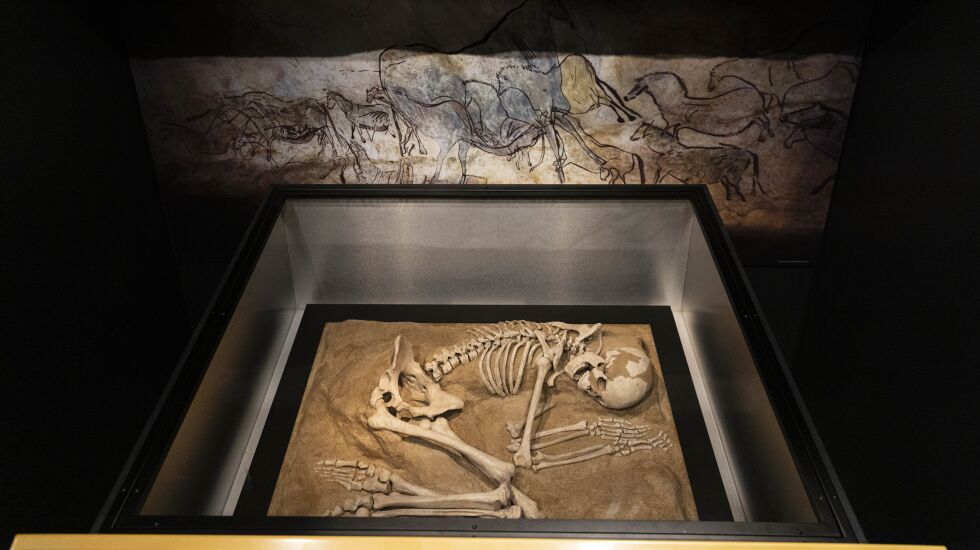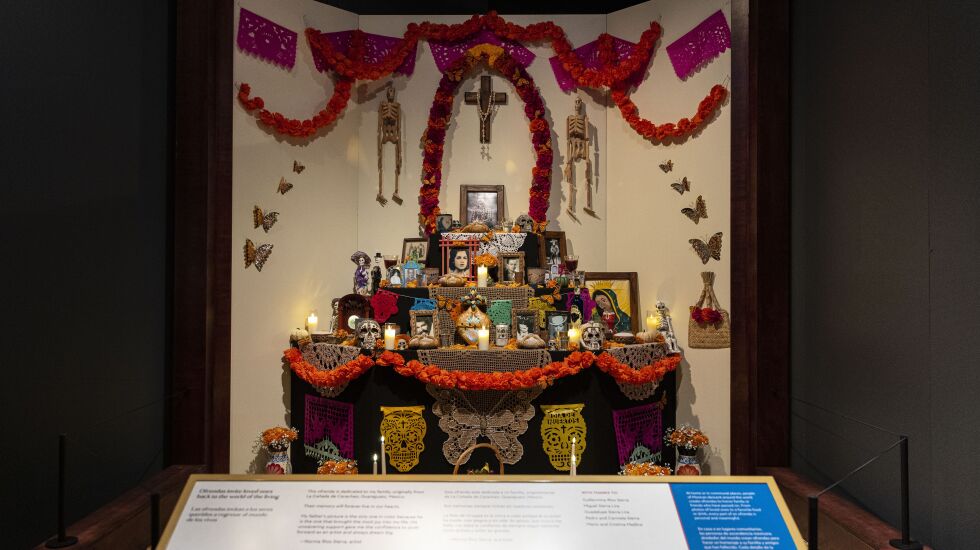
What is death?
It’s an initially jarring question the Field Museum poses in the opening hallway of its latest exhibit, “Death: Life’s Greatest Mystery,” opening Friday.
Dr. Gary Feinman, the Field’s curator of anthropology, sees death as something for living beings to work through: to “repair” the gaps left in the social networks all living things create.
“It’s a challenge the living face,” Feinman said. “How do you keep things intact?”
The exhibit ties together life and death with what Feinman called the “connective fabric” between all living beings.
Whether that be a decaying whale feeding bacteria at the bottom of the ocean or modern Día de Los Muertos celebrations — the latter of which is represented by a full-sized ofrenda created by local artist Norma Rios-Sierra — it all connects to a legacy that takes beings beyond a final resting place.

Feinman said the museum had to bring together members from all departments of its staff and experts from outside the institution to put together an exhibit as broad as “Death” but that it fell in the museum’s “sweet spot.”
“It’s the rare place where we deal with both the natural world and the cultural world,” Feinman said. “The topic demands a broad perspective.”
Amid three years of work — a COVID delay added time to the usual construction period — Feinman said the team had to rethink aspects of what they’d put together to reflect the COVID-19 pandemic and social justice movements of the last few years.
“We had to reassess and think about the fact that we’re living in a time of plague, war and social injustice, and that our exhibit should reflect that,” Feinman said.

Ben Miller, the exhibition developer or “storyteller” of the exhibit, said comfortability was also a consideration in putting it together. To accommodate the amount of contemplation the team anticipated from visitors, areas with benches were added along the exhibit’s route to allow for reflection with family, friends or oneself.
“Death is just a lot more relevant for a lot more people,” Miller said. “[So] we wanted to create a comfortable space for people to think about death… It’s something everyone has to deal with and [we wanted visitors to see] the breadth of that experience.”
The reflection areas were just one of the many interactive elements throughout the 7,500 square foot display, including a space for visitors to write how they want to be remembered and something they want to do before they die.
While Feinman and Miller have yet to leave their own answers, they said they plan to at some point during the exhibition’s nine months in Chicago.

For those afraid of the “potentially uncomfortable” subject, Feinman urges them to attend and hopes they find the same comfort he has through his research.
“Learning how other people deal with this universal phenomenon has been eye opening and insightful — in some ways it’s soothing,” Feinman said of his own experience studying early civilizations. “It helps you come to grips with it and see beyond the immediate world and those around you, and to take it a step beyond.”







